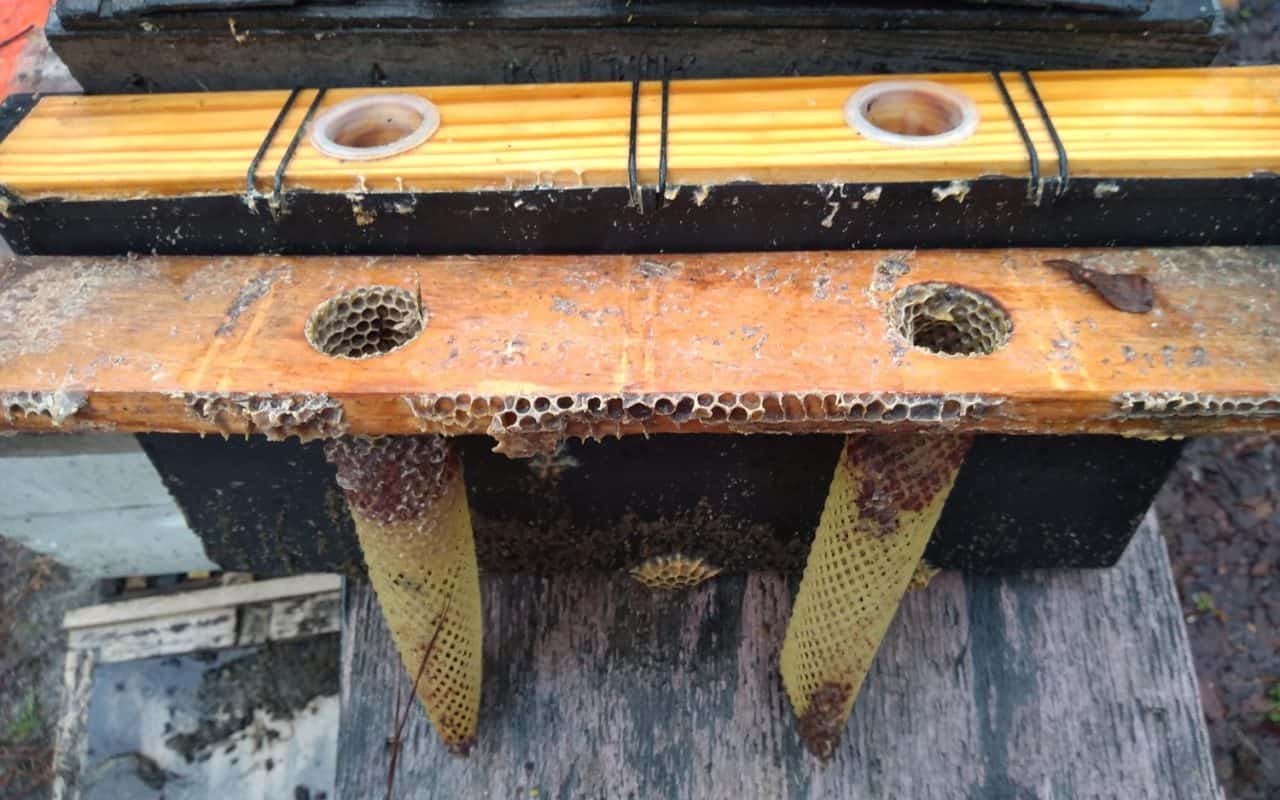Like most beekeeping topics, beekeepers tend to have their preferences when it comes to how they feed their bees. The two most common types of feeders used in hives are the frame feeder and the bucket or can (gravity) feeder. Both types of feeders have their merits and potential pitfalls, and beekeepers who elect to use one over the other often feel strongly about the choice. By looking at some of the arguments for and against each type, beekeepers can make a more informed choice on what type will best meet their needs and their bees’ needs. This post will run through the good and bad of using frame feeders. Keep your eyes open for the next post, which will run through what works and what doesn’t for gravity feeders.
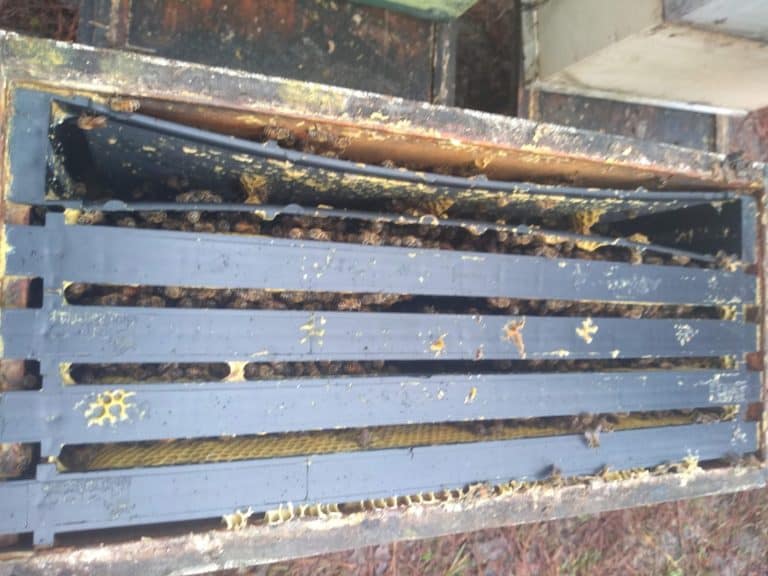
Photo: Dan Wyns
A frame feeder, as its name suggests, fits inside of a hive in place of one or more frames in the brood nest. Frame feeders are the length and depth of the box they are designed to be used in, with deeps being most common but feeders for mediums are also available. The feeders come in different volumes, most commonly one, one and a half, and two gallon sizes for deep boxes that are respectively 2”, 2.5”, and 3” wide, and for mediums a one gallon 3” wide model. Some older frame feeders made of folded and wax-dipped tin are occasionally encountered, but everything currently commercially available is molded plastic.
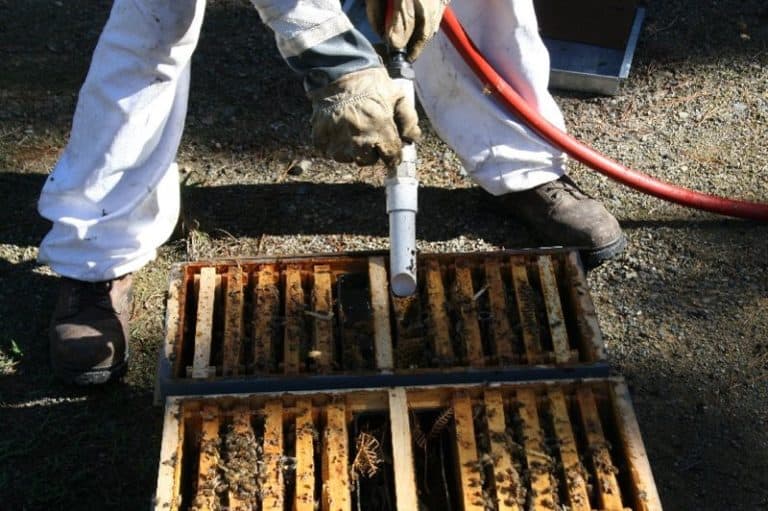
Photo: Dan Wyns
Most beekeepers that use frame feeders leave them in their hives year round, particularly those running double deep brood nests. Some beekeepers elect to permanently keep a feeder in both boxes of a double deep configuration in order to increase the capacity of syrup that can be supplied to a colony in a single apiary visit. When brood rearing is confined to a single deep, the use of a frame feeder at the expense of some brood area is potentially problematic in the smaller unit, so the beekeeper may need to remove them seasonally or use another method of providing feed when running singles.

Photo: Dan Wyns
One nice aspect of leaving the frame feeders in hives permanently is that it is one less piece of equipment that has to be transported to/from apiaries , cleaned, and stored at the shop. If they are used seasonally, storage and transportation is simplified by the ability to stack the frame feeders neatly in empty boxes.

Photo: Dan Wyns
Using frame feeders does require some equipment to dispense feed in the field. In a commercial context, this is typically accomplished with a feeding system composed of large totes or tanks of syrup with a pump and reel mounted hose capable of delivering a gallon of syrup in a matter of seconds. At a smaller scale, filling frame feeders may be as simple as a bucket of syrup with a funnel or a watering can. Whatever the scale and method of delivering syrup, it is important that it is done with care to avoid overflowing feeders or spilling syrup which may lead to robbing in the yard.
In palletized commercial operations that use frame feeders, there is a split between those that have feeders on the inside position (adjacent to neighboring hive) vs. outside position (edge of pallet). It is most common for frame feeders to be on the inside position, as this setup coupled with migratory covers means that when feeding, lids can be moved outward to provide access to feeders without exposing any other frames or otherwise disturbing colonies. This is a very time efficient way to feed a lot of colonies, especially when there is no other in-hive work or colony examination to be done in the apiary. Beekeepers who elect to have feeders on the outside of pallets must at least partially uncover frames when moving lids to access feeders. The argument for feeders on the outside is that during winter dormancy, colonies will tend to cluster towards the inside edge of the hive as adjacent hives can provide each other some thermal benefit while leaving the void of empty plastic feeder at the outside of the pallet.
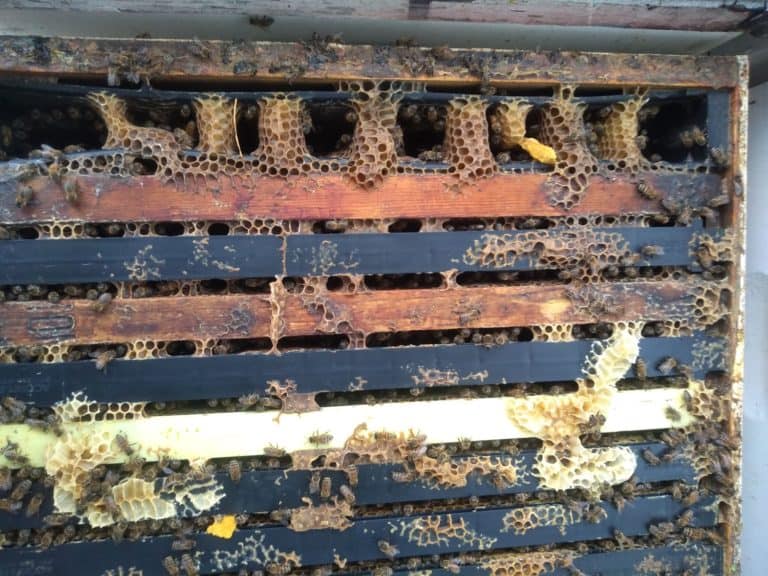
Photo: Dan Wyns
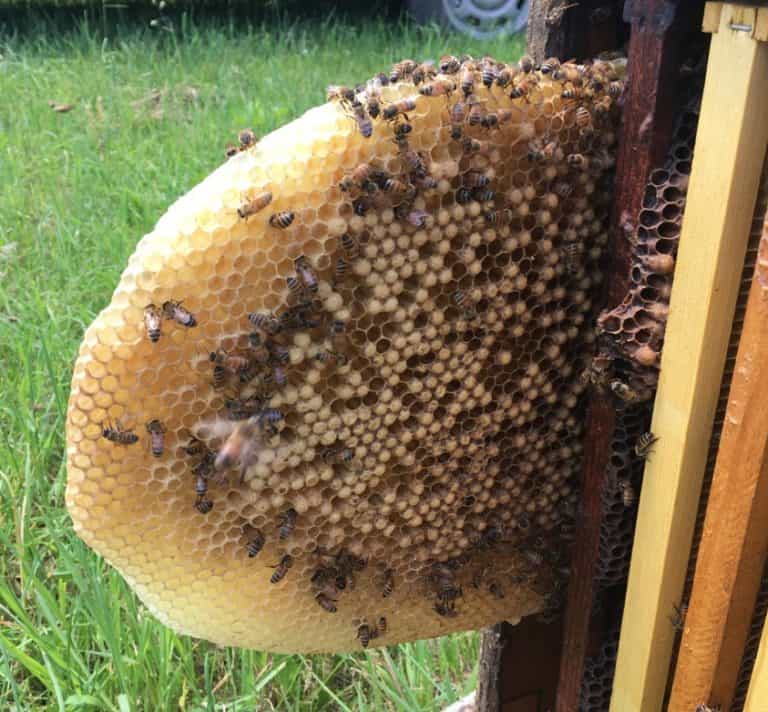
Photo: Ana Heck
The wide surface area of syrup in a frame feeder allows for rapid consumption of syrup, with big colonies being capable of emptying a 1 gallon feeder in a day or two. This ability to get syrup from feeder to comb rapidly can be advantageous, particularly in the fall when it is important that the colonies have enough time to remove sufficient moisture for capping before the onset of winter curtails colony activities. Frame feeders can also be beneficial in the spring when strong colonies with large populations and abundant brood rearing are capable of burning through a lot of feed quickly and inclement weather prevents adequate nectar foraging. Being able to supply a lot of syrup rapidly and through multiple visits can keep a colony moving forward. Another nice feature of frame feeders is that they are not prone to leaking or spilling once filled. This feature avoids any problems of feed contacting treatments or dribbling onto bees that can occur with some other types of feeders.
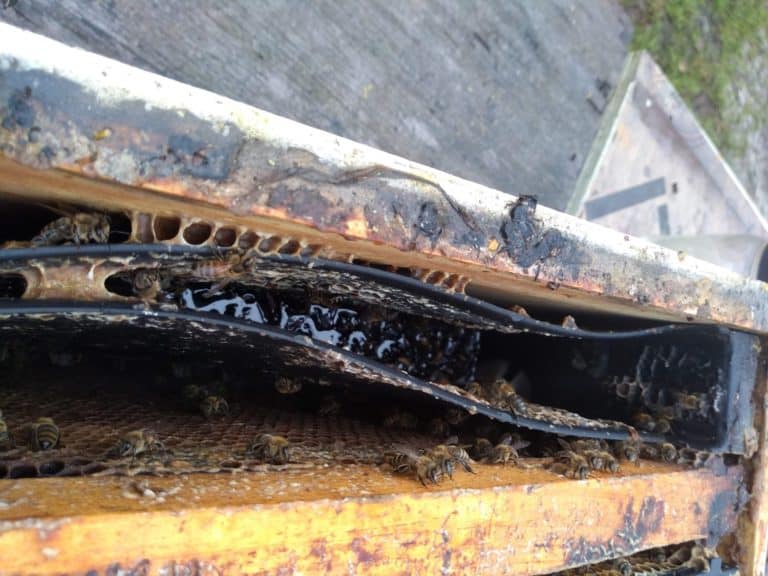
Photo: Dan Wyns
A problem with the frame feeder design is that the open access to syrup and plastic means that bees may fall into the syrup and be unable to scale the smooth walls to extricate themselves. This problem can result in many drowned bees covering the surface of the syrup, preventing other bees from taking feed, and ultimately leading to a fermented, sticky mess that has to be dealt with. Another issue is that many colonies view an empty frame feeder as a void of space within the hive that can and should be filled with comb. This comb building can be problematic as it can lead to reduced capacity for syrup and the possibility of drowning bees (or a queen) that are occupying the feeder when syrup is dispensed into it. Yet another potential issue with plastic frame feeders is that they are pliable and therefore prone to twisting and warping in the box. This warping is problematic because it makes them difficult to remove when working the colony, reduces feed capacity, and can lead to drone or burr comb on the adjacent frame.
Fortunately the recent addition of cap and ladder to frame feeder design has alleviated many of the above problems. The cap is made of wood that fits across the top surface of the feeder, serving to both provide rigidity and exclude bees’ access to the main volume within the feeder, thus preventing disfigurement and eliminating comb construction. The ladders are cylindrical, plastic mesh sleeves that extend from the cap down through the syrup to the bottom of the feeder. Bees are limited to the inside of these ladders, which provide the structure to climb out of the syrup should a bee fall in. This combination of features virtually eliminates the drowning of bees and solves many of the potential downsides of frame feeders. Some beekeepers have also found that a simple DIY fix of adding a folded sheet of hardware cloth to an open feeder provides sufficient structure for the bees to prevent drowning.

Photo: Dan Wyns
Like most things with bees there isn’t necessarily a right answer or a singular way to get to a desired goal, but hopefully this will give you an idea if a frame feeder will meet your needs. By catching the next blog installment, you can decide whether a frame feeder or a gravity feeder may better meet your needs.
